The Hasdingi were one of the Vandal peoples of the Roman era. The Vandals were Germanic peoples, who are believed to have spoken an East Germanic language, and were first reported during the first centuries of the Roman empire in the area which is now Poland, eastern Germany, the Czech Republic, and Slovakia.

Amstrad was a British consumer electronics company, founded in 1968 by Alan Sugar. During the 1980s, the company was known for its home computers beginning with the Amstrad CPC and later also the ZX Spectrum range after the Sinclair deal, which led it to have a substantial share of the PC market in Britain. In the following decade it shifted focus towards communication technologies, and its main business during the 2000s was the manufacture of satellite television set-top boxes for Sky, which Amstrad had started in 1989 as the then sole supplier of the emerging Sky TV service.

The Alans were an ancient and medieval Iranic nomadic pastoral people of the North Caucasus – generally regarded as part of the Sarmatians, and possibly related to the Massagetae. Modern historians have connected the Alans with the Central Asian Yancai of Chinese sources and with the Aorsi of Roman sources. Having migrated westwards and becoming dominant among the Sarmatians on the Pontic–Caspian steppe, the Alans are mentioned by Roman sources in the 1st century CE. At that time they had settled the region north of the Black Sea and frequently raided the Parthian Empire and the Caucasian provinces of the Roman Empire. From 215 to 250 CE the Goths broke their power on the Pontic Steppe.

Ricimer was a Romanized Germanic general who effectively ruled the remaining territory of the Western Roman Empire from 456 after defeating Avitus, until his death in 472, with a brief interlude in which he contested power with Anthemius. Deriving his power from his position as magister militum of the Western Empire, Ricimer exercised political control through a series of puppet emperors. Ricimer's death led to unrest across Italy and the establishment of a Germanic kingdom on the Italian Peninsula.
Foederati were peoples and cities bound by a treaty, known as foedus, with Rome. During the Roman Republic, the term identified the socii, but during the Roman Empire, it was used to describe foreign states, client kingdoms or barbarian tribes to which the empire provided benefits in exchange for military assistance. The term was also used, especially under the empire, for groups of barbarian mercenaries of various sizes who were typically allowed to settle within the empire.
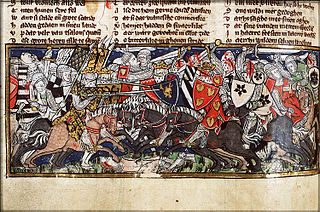
The Battle of the Catalaunian Plains, also called the Battle of the Campus Mauriacus, Battle of Châlons, Battle of Troyes or the Battle of Maurica, took place on June 20, 451 AD, between a coalition, led by the Roman general Flavius Aetius and the Visigothic king Theodoric I, against the Huns and their vassals, commanded by their king, Attila. It proved one of the last major military operations of the Western Roman Empire, although Germanic foederati composed the majority of the coalition army. Whether the battle was of strategic significance is disputed; historians generally agree that the siege of Aurelianum was the decisive moment in the campaign and stopped the Huns' attempt to advance any further into Roman territory or establish vassals in Roman Gaul. However, the Huns successfully looted and pillaged much of Gaul and crippled the military capacity of the Romans and Visigoths. Attila died only two years later, in 453; after the Battle of Nedao in 454 AD, the coalition of the Huns and the incorporated Germanic vassals gradually disintegrated.
Aegidius was the ruler of the short-lived Kingdom of Soissons from 461 to 464/465. Before his ascension he was an ardent supporter of the Western Roman emperor Majorian, who appointed him magister militum per Gallias in 458. After the general Ricimer assassinated Majorian and replaced him with Emperor Libius Severus, Aegidius rebelled and began governing his Gallic territory as an independent kingdom. He may have pledged his allegiance to the Eastern Roman emperor Leo I.
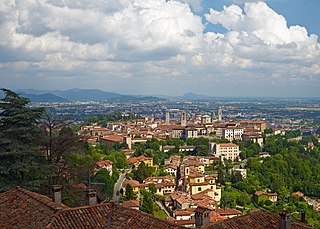
Bergamo is a city in the alpine Lombardy region of Northern Italy, approximately 40 km (25 mi) northeast of Milan, and about 30 km (19 mi) from Switzerland, the alpine lakes Como and Iseo and 70 km (43 mi) from Garda and Maggiore. The Bergamo Alps begin immediately north of the city.

This is a chronology of warfare between the Romans and various Germanic peoples. The nature of these wars varied through time between Roman conquest, Germanic uprisings, later Germanic invasions of the Western Roman Empire that started in the late second century BC, and more. The series of conflicts was one factor which led to the ultimate downfall of the Western Roman Empire in particular and ancient Rome in general in 476.

The Kingdom or Domain of Soissons is the historiographical name for de facto independent Roman remnant of the Diocese of Gaul, which existed during late antiquity as a rump state of the Western Roman Empire until its conquest by the Franks in AD 486. Its capital was at Noviodunum, today the town of Soissons in France.
The Battle of Resaena or Resaina, near present-day Ceylanpınar, Turkey, was fought in 243 between the forces of the Roman Empire, led by the Emperor Gordian III and the Praetorian Prefect Timesitheus against the Sasanian Empire's forces during the reign of Shapur I. The Romans were victorious.
Richimund or Rechimund was a Suevic leader in Galicia from 457 until about 464. He was not recorded as a king (rex), though Hydatius wrote that inter Frumarium et Rechimundum oritur de regni potestate dissensio. In 457 the Suevi split into two factions, one headed by Maldras raiding Lusitania and another led by Framta remaining in Galicia. After a few months of rule, Framta died and Rechimund appeared as his successor. While it is possible that the Suevi were living under a diarchy, it is more likely that the two factions remained independent of one another. Maldras' eventual successor, Frumar, was also not described as a king, but in 464 or thereabouts the entire Suevic nation was unified under a king named Remismund. Presumably, Rechimund and Frumar had battled for the throne and both had been eliminated, paving the way for Remismund. Some scholars have equated Remismund with Rechimund, but this seems far-fetched.
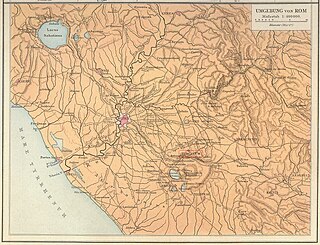
The Battle of Corbio took place in 446 BC. General Titus Quinctius Capitolinus Barbatus and legatus Spurius Postumius Albus Regillensis led Roman troops to a victory over the Aequi tribes of north-east Latium and the Volsci tribes of southern Latium at the town of Corbio. The Romans had already defeated the Aequi in the Battle of Mount Algidus, so that the Battle of Corbio definitely marked the dominion of the Romans over this tribe.

Giuseppe Alessandro Furietti was a Roman Catholic cardinal, an antiquarian and philologist, and a collector of antiquities whose ambitious excavations at the site of Hadrian's Villa at Tivoli rewarded him with the Furietti Centaurs and other Roman sculpture.

Libius Severus, sometimes enumerated as Severus III, was Western Roman emperor from November 19, 461 to his death on November 14, 465. A native of Lucania, Severus was the fourth of the so-called "Shadow Emperors" who followed the deposition of the Valentinianic dynasty in 455. He ruled for just under four years, attaining the throne after his predecessor, Majorian, was overthrown by his magister militum, Ricimer. Severus was the first of a series of emperors who were highly dependent on the general, and it is often presumed that Ricimer held most of the de facto power during Severus' reign
Gaiseric, also known as Geiseric or Genseric was king of the Vandals and Alans from 428 to 477. He ruled over a kingdom and played a key role in the decline of the Western Roman Empire during the 5th century.
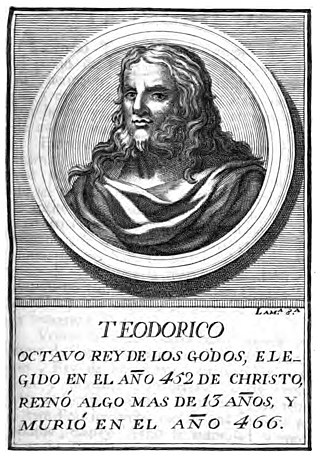
The Battle of Orléans took place in the year 463, between the Kingdom of Soissons, under the command of the magister militum Aegidius, and the Visigoths, commanded by the Visigoth King Theodoric II and his brother Federico.
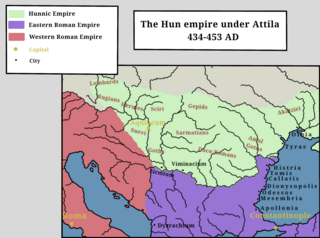
The history of the Huns spans the time from before their first secure recorded appearance in Europe around 370 AD to after the disintegration of their empire around 469. The Huns likely entered Western Asia shortly before 370, from Central Asia: they first conquered the Goths and the Alans, pushing a number of tribes to seek refuge within the Roman Empire. In the following years, the Huns conquered most of the Germanic and Scythian tribes outside of the borders of the Roman Empire. They also launched invasions of both the Asian provinces of Rome and the Sasanian Empire in 375. Under Uldin, the first Hunnic ruler named in contemporary sources, the Huns launched a first unsuccessful large-scale raid into the Eastern Roman Empire in Europe in 408. From the 420s, the Huns were led by the brothers Octar and Ruga, who both cooperated with and threatened the Romans. Upon Ruga's death in 435, his nephews Bleda and Attila became the new rulers of the Huns, and launched a successful raid into the Eastern Roman Empire before making peace and securing an annual tribute and trading raids under the Treaty of Margus. Attila appears to have killed his brother, and became sole ruler of the Huns in 445. He would go on to rule for the next eight years, launching a devastating raid on the Eastern Roman Empire in 447, followed by an invasion of Gaul in 451. Attila is traditionally held to have been defeated in Gaul at the Battle of the Catalaunian Fields, however some scholars hold the battle to have been a draw or Hunnic victory. The following year, the Huns invaded Italy and encountered no serious resistance before turning back.
The following is a timeline of the history of the city of Bergamo in the Lombardy region of Italy.











